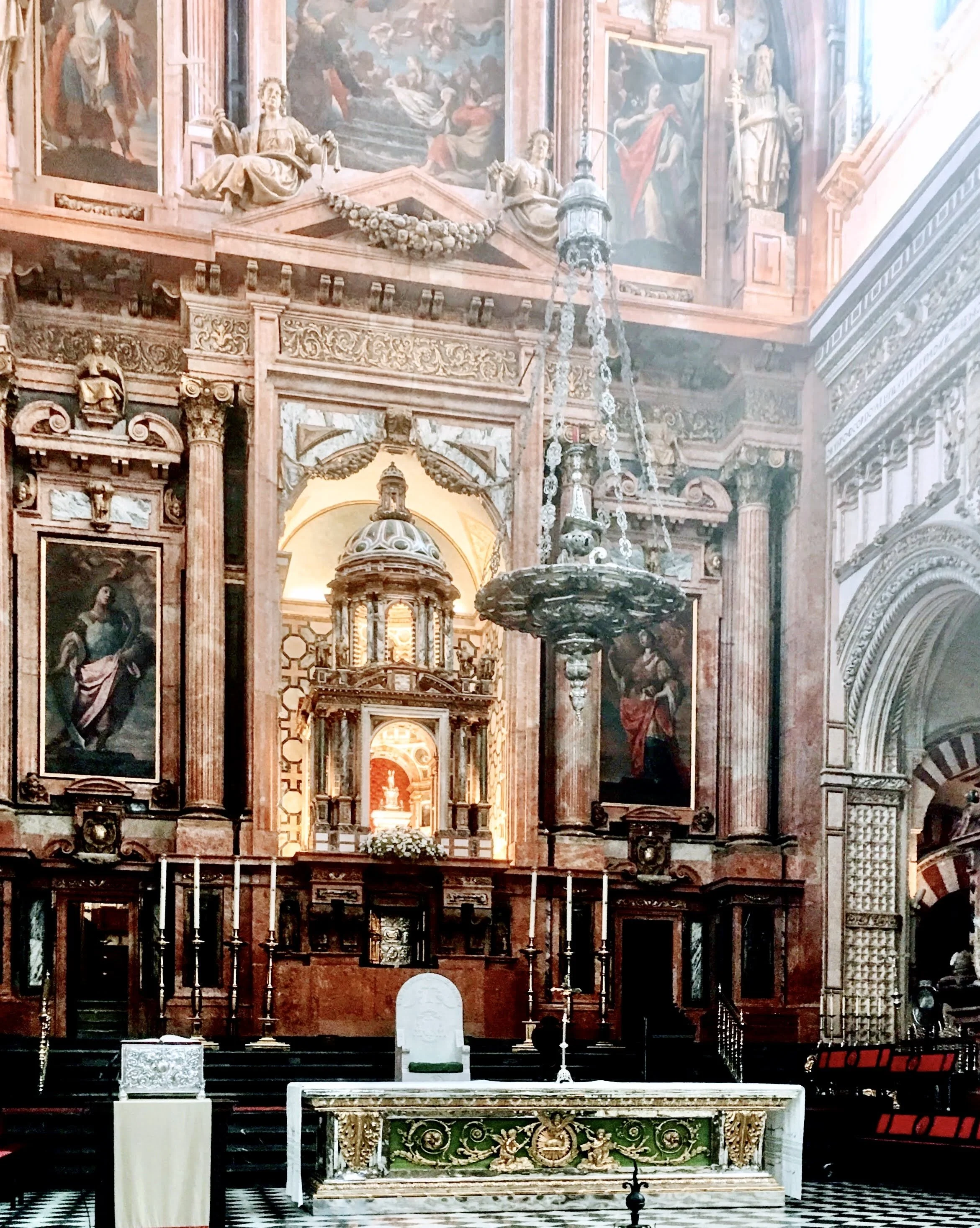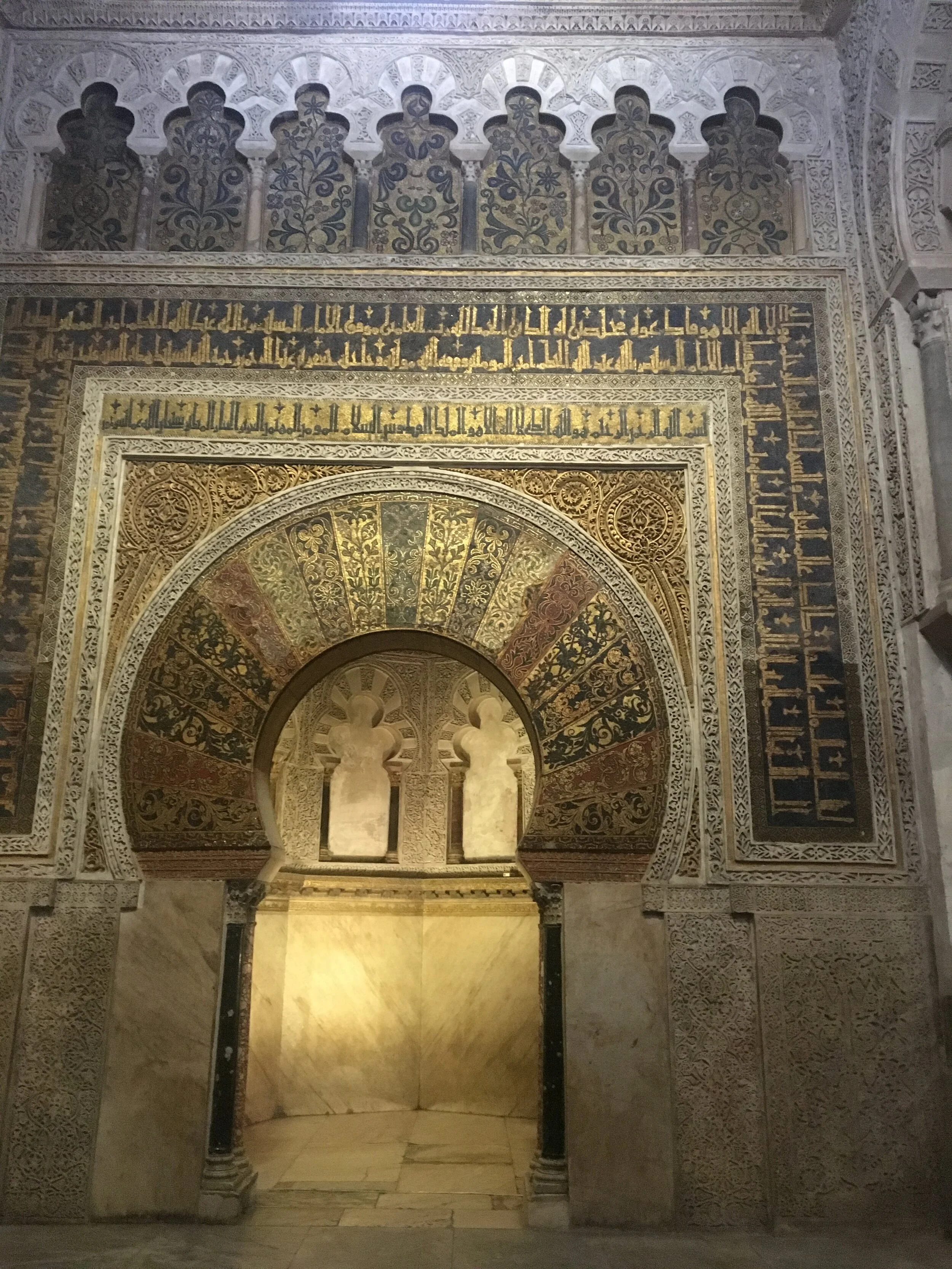Cordoba ~ A Symbol of Religious Tolerance
A promising symbolism of two major religions ~ Islam and Christianity co-existing in one shared space.
The Mezquita Cathedral of Cordoba is a sixteenth century cathedral inside an eighth century mosque. One of the most stunning religious places in the world that I’ve seen.
The endless rows of columns and terra-cotta and white striped arches are incredibly symbolic of Islamic Spain. When I first entered, I was completely overwhelmed by the space and the simplicity of the design. What makes it so beautiful is the absence of complication. It was supposed to mimic the open desert that was so familiar to the Arabs who had moved to Cordoba when the Ummayads came to power.
It was the space that allowed Muslims to sense and communicate with God freely.
The construction of the Great Mosque of Córdoba began in 784 CE and lasted for over two centuries resulting in what UNESCO refers to as “the most emblematic monument of Islamic religious architecture.” Thousands of artisans and laborers were employed. Only the finest materials were used: stone and marble quarried from the mountains of nearby Sierra Morena and columns of granite, jasper, marble and onyx recycled from the original temple and other Roman ruins around the Iberian peninsula. Upon the columns were the double arches which allowed for support of the higher vaulted ceiling. The lower horseshoe-shaped arches were made of red brick alternating with white stone that continually draws your eye. The décor was fashioned from ivory, gold, silver, copper, brass and mahogany and intricate mosaics and azulejos (glazed, colored tiles) were designed.
A remarkable and unique creation, the Great Mosque of Córdoba held a central place of importance among the Islamic community and was a major Muslim pilgrimage site.
In 1236, the Catholics re-conquered Cordoba. For almost three centuries, the beauty of the Great Mosque was largely left alone, but in the 16th century, the Catholic king Carlos I had the center of the mosque ripped out and commissioned the construction of a cathedral. The cathedral was built in a variety of styles ranging from late Renaissance, Gothic, and Spanish Baroque.
Like many cathedrals, it’s breathtaking with its ornately carved mahogany altar and the plunder from the New World gilding surfaces in silver and gold. A variety of semi-precious stones are used throughout the area and oil paintings of notable events and personages are abundant.
The entrance to the mihrab or prayer niche is structured through a canted horseshoe arch where we find the mosaic decoration which links to the Byzantium tradition. Inscriptions which record verses from the Koran are added to by plant motifs which display the thematic motif of the "tree of life". Interestingly, the mihrab faces south rather than the traditional placement towards Mecca.
The church has preserved this area as a piece of art, Muslims are not allowed to pray here.
The Mihrab is more than a simple niche but is created as a small octagonal room covered by a scallop shell dome. It rises up from a marble plinth which is surrounded by a qur’anic surah and an inscription alluding to the creators of the work. At the top, on the wall panels, trefoil blind arches are found along with an abundant decoration of stylized plant motifs.
Over the years a couple of chapels were constructed to the side of the vast space and the four-story minaret, from which calls to prayer were previously heard, became a tower for tolling bells summoning faithful.
The Jewish quarter completes the religious trifecta. This square is graced by the statue of Maimonides, a Jewish scholar who lived during the same period in Cordoba. Visitors to the Jewish quarter touch his feet for good luck leading to well polished shining feet.






